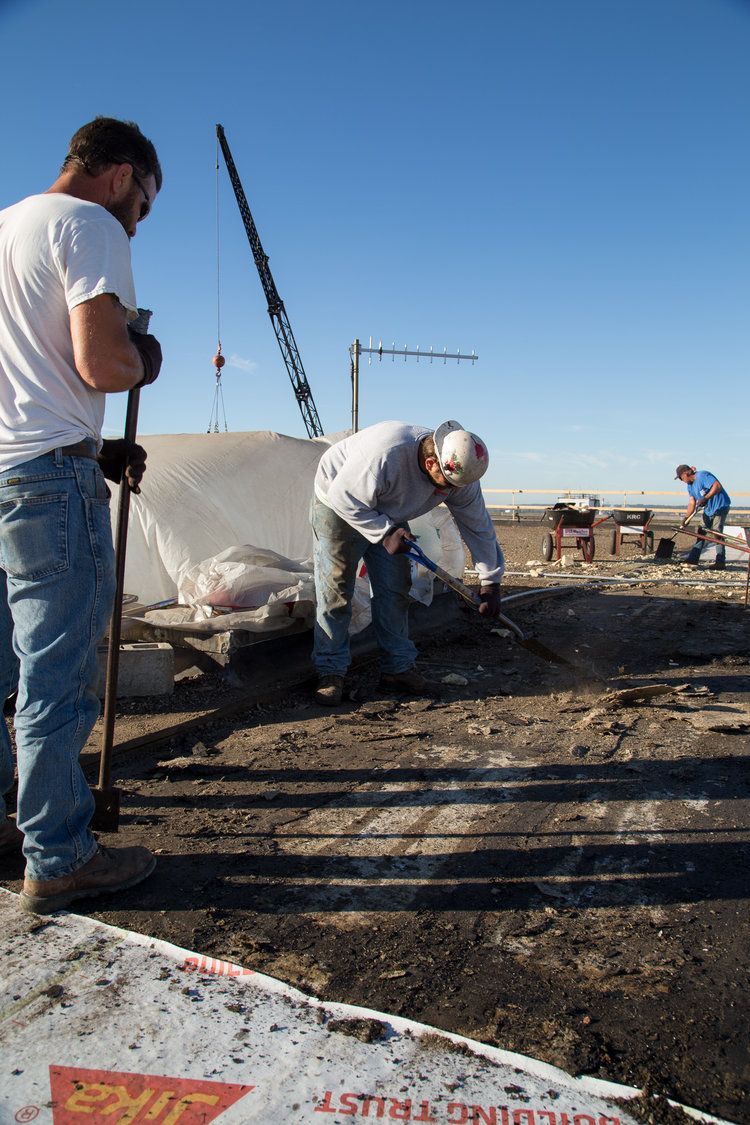Is A Thicker Roof, A Better Roof?

Is A Thicker Roof, A Better Roof?
As you probably already read in our commercial roof types page, there are a slew of different roofing systems to choose for your roof. In addition to material type, most roofing materials can also come in a variety of sizes, which begs the question, is a thicker roof a better roof?
Like most answers, the correct way to address this question is simply by saying "it depends".
Modern Roofing Systems are Technologically advanced...
So it's only natural that we address the roofing material thickness question by reminding everyone of the golden rule of electronics: bigger isn't always better, but sometimes it is. A brief look into the television industry is prime example how science and technology has not only made a product smaller, they're also improved upon the performance without sacrificing the overall footprint.
Like televisions, the modern roofing system (single-ply) was invented to be lighter and easier to install. Throughout the years, manufacturers have also made improvements in both the manufacturing process and the material itself. All single-ply materials (TPO, PVC, & EPDM) now come in a range of thickness options between 0.40-mil (0.04 in) up through 0.90-mil (0.09 in). While generally the answer is usually "yes, thicker is better", modern roofing systems have advanced to a point where buying the thickest possible material is not always necessary. To fully understand what this means, it's important you first understand what makes up each of the materials.
TPO Material Composition
A typical TPO membrane consists of a polymer base, a polyester reinforced fabrice center called a "scrim" and a top layer made from thermoplastic polyolefin top layer (aka TPO). The top layer is the only layer that is waterproof and it's important to remember that as you increase the total thickness of your roofing material, the incremental increase does not 100% translate to a 100% increase in thickness of waterproof material. However, as you can see below, the thicker the material you buy, the high percentage of the material is actually providing protection, therefore giving you a greater value for the money. The thicker the waterproofing layer, the longer the expected life (typical TPO roofs wear 1-2 mils of thickness per year under normal conditions), but it comes at the cost of a stiffer material to work with, which leads to a longer install time and a higher cost.
Average Thickness Above Scrim:
45-mil TPO membrane: 15-19 mils (33.3%-42.2% of total thickness)
60-mil TPO membrane: 21-27mils (35%-45% of total thickness)
80-mil TPO membrane: 30-38 mils (37.5%-47.5% of total thickness)
EPDM Material Composition
Unlike TPO, the EPDM material does not consist of layers of different material. Instead, when you purchase a 0.45-mil roll of EPDM, you're actually receiving two layers of the same material that are laminated together (which means you're actually receiving that same level of thickness of waterproofing as total thickness of the material. The theory behind this is that if there is a manufacturing weakness in one sheet, it's unlikely that the second ply is also weak in the exactly same area once they're laminated). With the composition in mind, the thicker you purchase, the less susceptible to punctures your roofing system becomes.
One word of caution. Don't assume .60-mil of EPDM is better than .60-mil of TPO simply because it has a thicker layer of waterproofing. Just as it's difficult to compare apples to oranges, the same concept is true while comparing EPDM to TPO or PVC. To read more about the advantages and disadvantages of each type of material, click here
Built-Up Roofs (BUR)
Built-Up Roofing Systems offer multi-layer protection, making them a durable choice for many buildings. Known for their long lifespan and reliability, BURs provide excellent waterproofing and are a cost-effective solution for flat or low-slope roofs.
Modified Bitumen Roofs
Modified Bitumen Roofing combines traditional and modern technology for enhanced flexibility and strength. Ideal for buildings requiring superior waterproofing and weather resistance, this type of roofing is easy to maintain and repair, making it a smart choice for commercial properties.
Sheet Metal Roofs
Sheet Metal Roofing stands out for its longevity, recyclability, and ability to withstand extreme weather conditions. Available in various styles and colors, metal roofs offer both aesthetic appeal and energy efficiency, reflecting sunlight to reduce cooling costs.
Roof Coatings
Roof Coatings extend the life of your roof by providing an additional layer of protection against the elements. Suitable for almost any roofing system, coatings can improve energy efficiency, prevent leaks, and minimize the need for costly repairs or replacements.
Each of these roofing options has unique benefits, and our team at Kreiling Roofing is here to help you choose the best solution for your specific needs.
